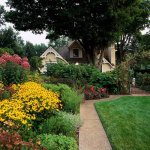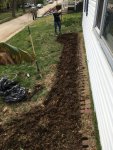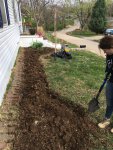- Joined
- Mar 31, 2017
- Messages
- 24
- Reaction score
- 15
- Hardiness Zone
- 6B
- Country

I live in the midwest (zone 6B) and I'm interested in landscaping my front yard with only native plants. Also, I have an interest in those native plants being good for the pollinators (bees and butterflies). My front yard is north facing with plenty of sun.
Does anyone have any experience with this? I would love to pick your brains about what was successful and how you went about achieving it. In my mind, It seems like the plants would be more likely to thrive since they are meant to be growing in the area anyway.
I attached a photo of the style of garden I would like to achieve, but I'm not attached to any specific plants. I have also attached two photos of the are we have dug up for the garden. We have not edged the garden or amended the soil yet.
Does anyone have any experience with this? I would love to pick your brains about what was successful and how you went about achieving it. In my mind, It seems like the plants would be more likely to thrive since they are meant to be growing in the area anyway.
I attached a photo of the style of garden I would like to achieve, but I'm not attached to any specific plants. I have also attached two photos of the are we have dug up for the garden. We have not edged the garden or amended the soil yet.



